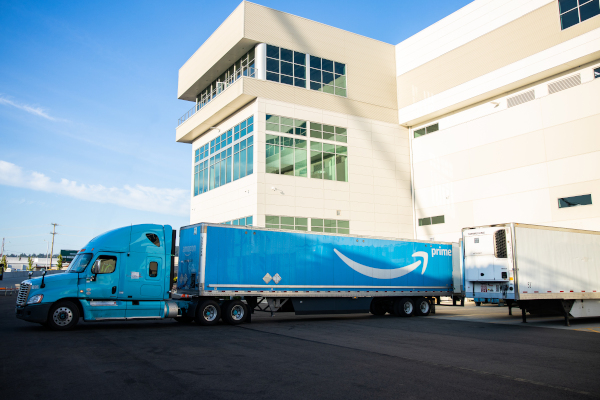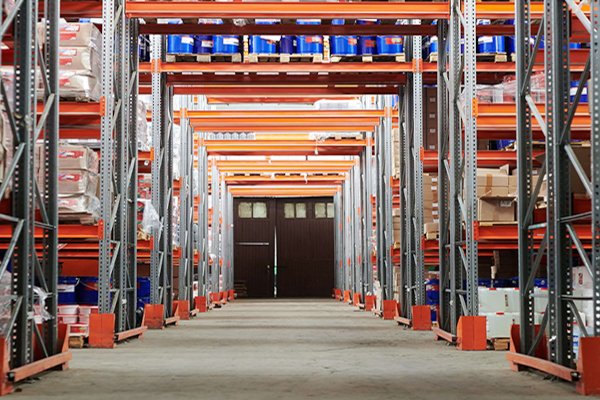Amazon Bets on Itself with New End-to-End Supply Chain Service
The e-commerce giant will open its advanced supply chain capabilities to sellers
With infrastructure already in place, it was only a matter of time until Amazon launched its own end-to-end supply chain service.
The e-commerce giant announced earlier this week plans to fully automate supply chain services for all third-party sellers, with the goal of keeping products in stock, shipping faster and more reliably, and lowering costs. Sellers will have access to Amazon’s entire global network, including logistics, warehousing, distribution, fulfillment, and transportation capabilities.
This program is “a mix of new and old,” writes e-commerce strategy consult Rick Watson in a LinkedIn post. “The scope of the release is end to end, from manufacturing to customers. Let’s be clear: this is more about the ultimate go-to-market manifestation of Amazon’s global logistics ambitions. In other words, AWS meets logistics,” says Watson.
“Let’s be clear: this is more about the ultimate go-to-market manifestation of Amazon’s global logistics ambitions. In other words, AWS meets logistics.”
In 2006, Amazon took the first step into the logistics space when it created Fulfillment by Amazon, a program that allows it to store, pick, pack and deliver orders for third-party merchants. Now the e-commerce giant is looking to get involved from the start.
With Supply Chain by Amazon, the company can pick up inventory from manufacturing facilities around the world, ship it across borders, handle customs clearance and ground transportation, store inventory in bulk, manage replenishment across Amazon and other sales channels, and deliver directly to customers.
“It’s hard not to be impressed with the scale of the capabilities especially the fact that this is less about, ‘Hey, we are going to build something new from scratch,’ and more about ‘We already have all this, but we have finally figured out how we are going to go to market consistently with this,” says Watson.
In addition, Amazon has streamlined domestic inbound transportation to AWD with its Partnered Carrier Program (PCP) and opened AWD to all sellers.
Other new features include multi-channel distribution (MCD) capability, which allows partners to sell across multiple sales channels, including online and physical store locations. MCD moves sellers’ bulk products from AWD to any sales channel, allowing sellers to replenish across all channels from a single inventory pool.
Amazon is also expanding automatic inventory replenishment with Fulfillment by Amazon. By leveraging machine learning and supply chain optimization capabilities, partners will automatically be able to replenish inventory into Amazon fulfillment centers.
“When people ask me will brands trust Amazon, I think the answer is yes, with time,” says Watson. “Look at it this way, so many people trust AWS. It’s not a stretch to think that many growing SMB and mid-market brands could trust Amazon because replicating this level of scale and reliability may be nearly impossible otherwise.”
And while benefits for sellers have been noted, supply chain analyst Brittain Ladd also predicts the service will be a huge financial boon for Amazon.
He writes in a LinkedIn post that “Amazon will generate an additional $50 to $60 billion to the bottom line by greatly expanding programs to provide companies with supply chain management and logistics services.”
Article Topics
Amazon News & Resources
North Carolina Welcomes Amazon’s Newest Mega-Warehouse Amazon Logistics’ Growth Shakes Up Shipping Industry in 2023 The Harsh Reality for Amazon and Walmart Warehouse Workers Parcel experts examine the UPS-United States Postal Service air cargo relationship amid parcel landscape Will recent talks between FedEx and Amazon lead to a reunion? C.H. Robinson President & CEO Bozeman provides overview of key logistics trends and themes at SMC3 JumpStart 2024 Plug Power completes first Installation of electrolyzer at Amazon fulfillment center More AmazonLatest in Transportation
A Look at Baltimore’s Key Bridge Collapse—One Month Later Baltimore Continues Bridge Recovery With Opening of New Channel How Shippers Can Prep for Hurricane Season UPS Struggles in First Quarter With Steep Earnings Decline FedEx Announces Plans to Shut Down Four Facilities The Two Most Important Factors in Last-Mile Delivery Most Companies Unprepared For Supply Chain Emergency More TransportationAbout the Author














